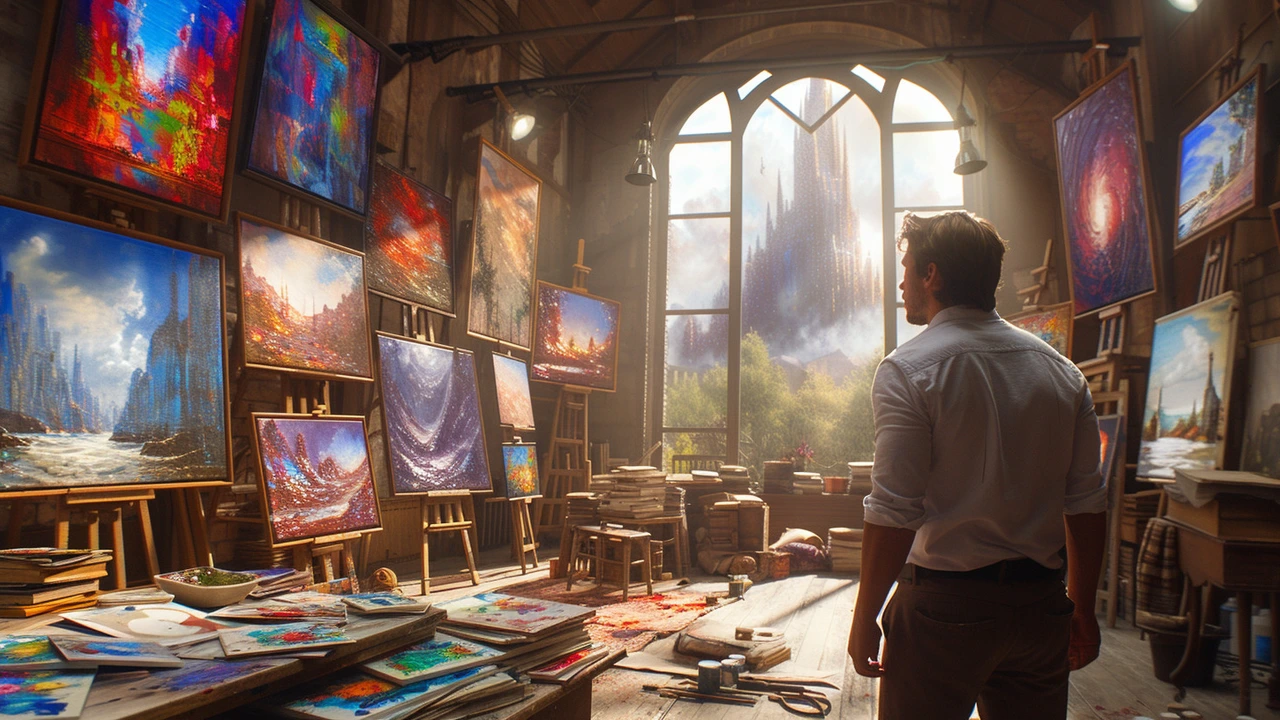Discovering the Magic of Cubism
Ladies and gentlemen, I ask you to spare a few moments to step into the world of multifaceted geometrical landscapes, seeing the world from multiple viewpoints, and challenging the traditional notions of perspective. This, my dear readers, is where we delve into the fascinating realm of Cubism and how it serves as a powerful tool in artistic storytelling. There's something magnetic about Cubism, its tendency to draw the eye with its disruptive approach to form, perspective, and representation. At its core, it's all about presenting multiple narratives simultaneously beyond the bounds of time and space, a signature trait that makes it indeed a unique storytelling tool. A compelling narrative is not just about the plot but also about how it's delivered. And Cubism, my friends, opens to us a multi-dimensional narrative strategy.
Cubism: The Rebellion against Traditional Artistic Norms
An elite gang of artists, led by the likes of Pablo Picasso and Georges Braque, started the Cubist revolution around the early 20th century. Rebelling against the paradigm of depiction established since the Renaissance, they introduced a fresh perspective favouring geometric shapes and fragmented forms. The power and beauty of Cubism lie in its audacity to challenge the traditional, its refusal to succumb to strict laws of perspective and boldly present the same object from multiple viewpoints and in different lights, all at once. It's like having a multi-camera setup in a single painting! Now, who wouldn't want to see that?
The Power of Cubism: Multiple Perspectives, One Frame
Quite like your favourite Netflix show, Cubist art gives you multiple storylines, perspectives, and narratives in a single frame. It's not about portraying the world as it is seen but rather as experienced with all the intricate, intersecting narratives. Isn’t that the essence of storytelling - to connect the audience with a multi-layered experience? Picasso’s ‘Les Demoiselles d’Avignon’ painting is an outstanding example: five ladies seen from different viewpoints, yet all existing in the same plane, provoking a sense of intrigue and promoting a continuously evolving narrative. Creative genius, wouldn’t you agree?
Unlocking the Power of Cubism in Artistic Storytelling
Cubism, with its celebratory embrace of complexity and multiplicity, offers an inspiring approach in storytelling. The application of Cubism isn’t just confined to canvases and sculptures. It can very easily find a home in literature, cinema, theatre, and more. Take for instance, the now-legendary ‘Pulp Fiction’ by Quintin Tarantino. The unconventional narrative with its non-linear time frame and overlapping plotlines, mirrors the characteristics of Cubism. It provides an illustrative understanding of how Cubism as a creative tool can be extended beyond visual arts. Experimenting with this approach can bring forth some wildly creative and innovative narratives.
Cubism and I: A Story of Love and Inspiration
Art and I, we've had a kind of a thing, an ongoing love thing. My tryst with Cubism began quite unexpectedly when I was backpacking through Europe in my early twenties. I found myself admiring a Cubist painting in a small obscure gallery in Prague, the city fondly known as the ‘Cubist capital of the world’. The confusion, the intrigue, the warped perception – everything about it intrigued me. While Cubism can seem messy and chaotic at first glance, when you brave yourself to transcend the obvious, you see beyond the chaos. That, my friends, was the moment when I fell in love with Cubism. It inspired me to view the world in a new, exciting way. My ability to write and convey stories underwent a dramatic transformation, as I started adopting the structure and ethos of Cubism. Isn’t it exciting how the synergy of life and art can lead to profound personal and professional transformations?
Thus, my friends, if there's one thing you should take away from this dialogue today, it's this - Cubism might break rules, warp perceptions, and make you scratch your heads a bit more than you'd like. But that's precisely what makes it an intriguing, fascinating, and exceptional method of storytelling, irrespective of the medium you choose. By breaking with the traditional and playing with multi-dimensional narratives, Cubism empowers us to evolve beyond the conventional and reshape our own creative journeys with an audacious twist. After all, storytelling is also about shaking things up a bit, isn't it?



